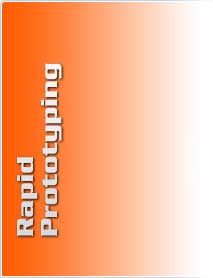

Tech, Incís Rapid Prototyping Stereolithography service is an additive fabrication procedure that develops a prototype model through a layering technique. Described below is how this method produces prototype models accurately and promptly.
How It Works
Solid modeling software is used to design a 3-D virtual model which is exported as an .stl file.
After production, parts are cleaned of excess resin in a chemical bath and cured in an UV oven, leaving a solid product with a high-quality surface. The surface can also be polished, making these parts suitable for clear materials.
Advantages and Uses
Stereolithography prototype models have countless purposes; concept models, masters, and patterns are just a few broad examples.
Specifically, SLA prototypes can be concept models for:
Solid modeling software is used to design a 3-D virtual model which is exported as an .stl file.
1. The .stl file is loaded into the Tech, Inc Stereolithography machine and is sliced into thin layers.
2. A container of photosensitive liquid resin becomes the birthplace of the prototype model, as light strikes the surface and turns the liquid to solid, according to the geometric virtual model.
3. As each layer is completed, the SLA machine will lower the layer into the liquid again, exposing another layer of liquid.
2. A container of photosensitive liquid resin becomes the birthplace of the prototype model, as light strikes the surface and turns the liquid to solid, according to the geometric virtual model.
3. As each layer is completed, the SLA machine will lower the layer into the liquid again, exposing another layer of liquid.
After production, parts are cleaned of excess resin in a chemical bath and cured in an UV oven, leaving a solid product with a high-quality surface. The surface can also be polished, making these parts suitable for clear materials.
Advantages and Uses
Stereolithography prototype models have countless purposes; concept models, masters, and patterns are just a few broad examples.
Specifically, SLA prototypes can be concept models for:
- piece parts,
- master patterns for molding techniques,
- or for investment and casting applications.
The experts at Tech, Inc are here to guide you through the steps from concept to production; contact us for more information on Stereolithography or any of our rapid prototyping technologies.
